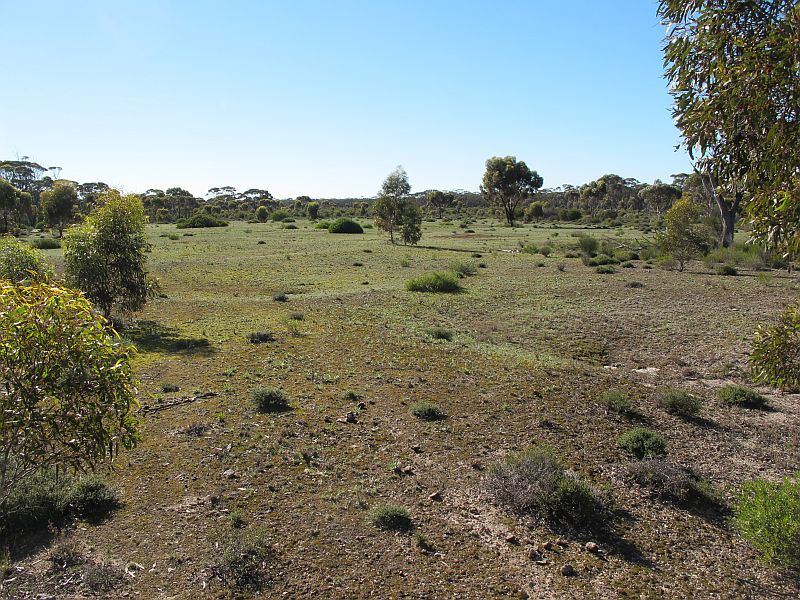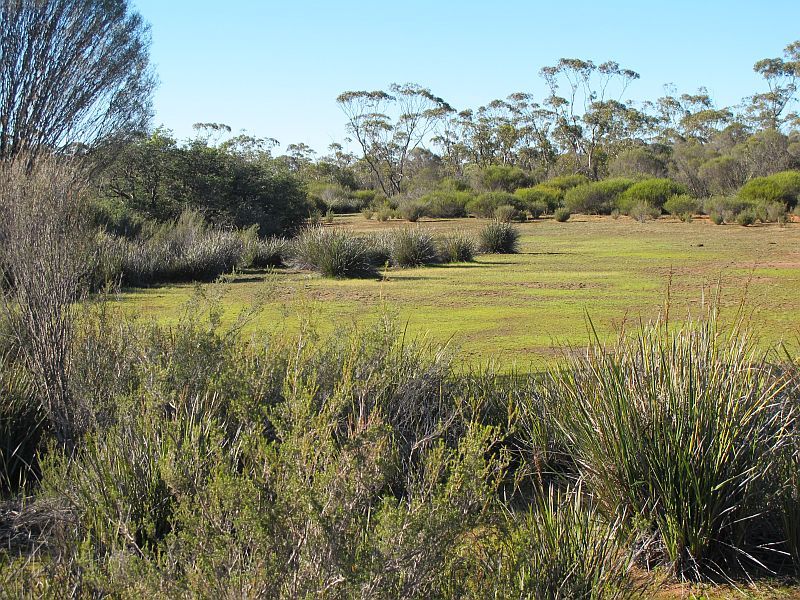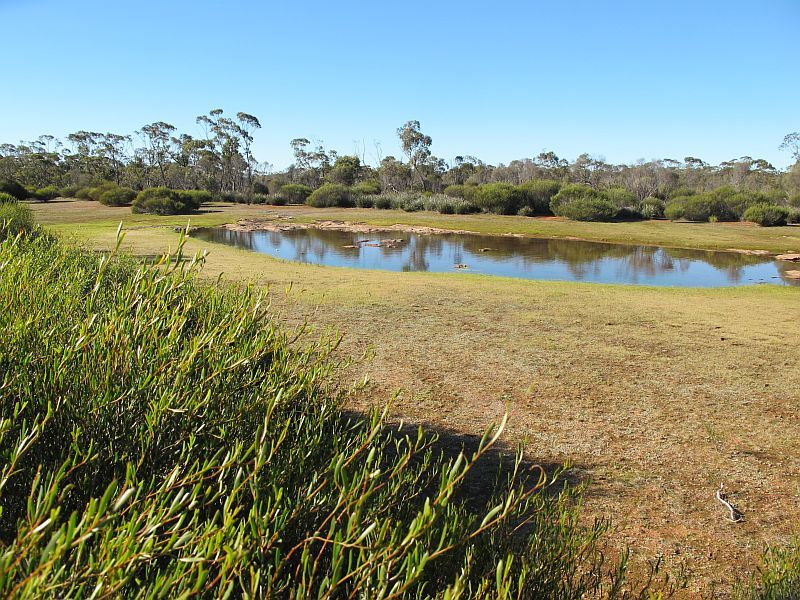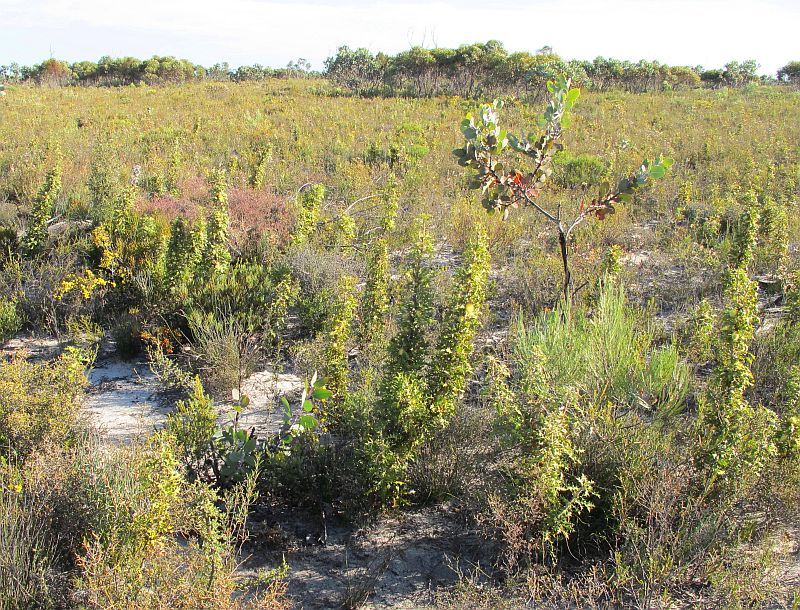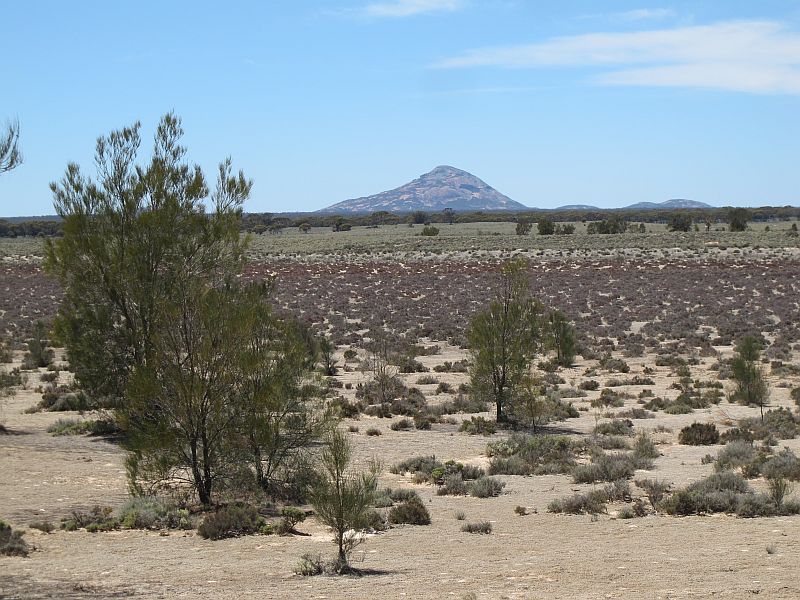

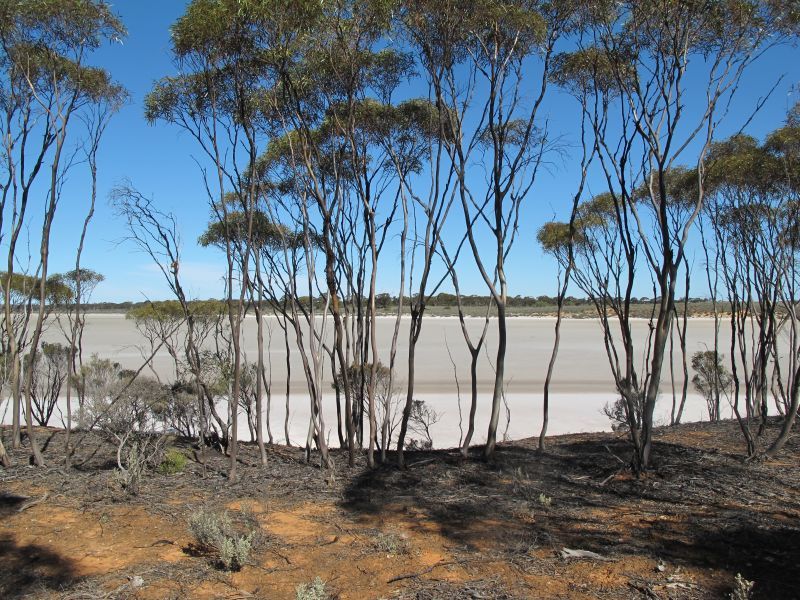
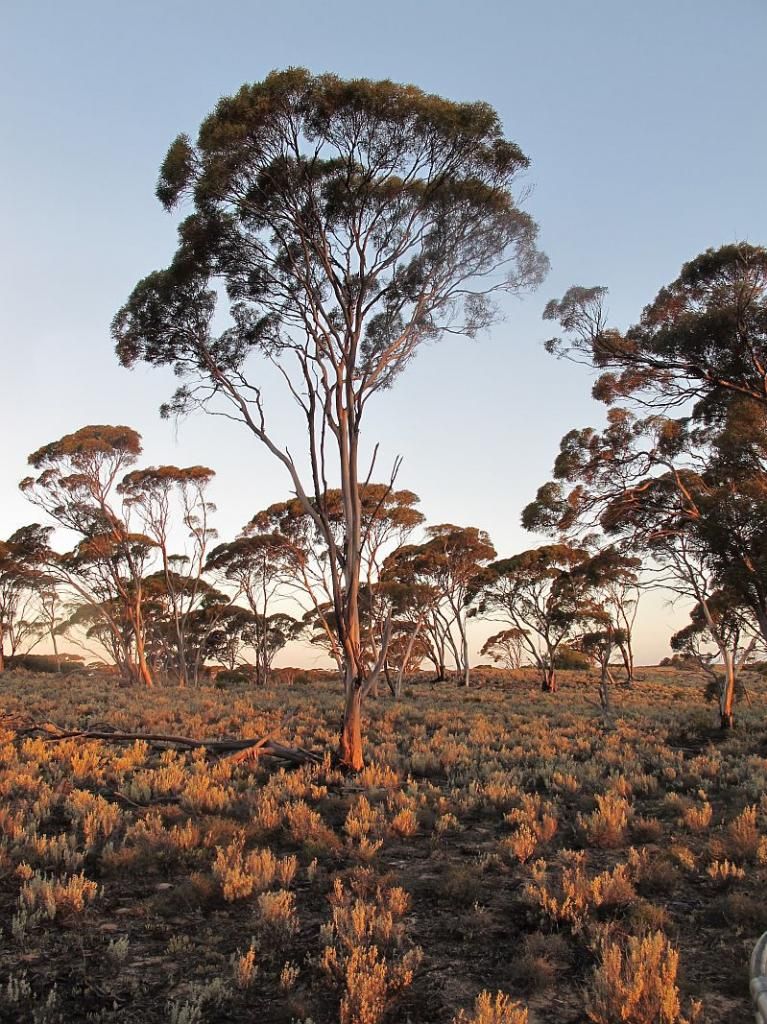
Thought you might be interested in the science I have been doing over the past couple of days. It is in a remote part of the mallee NW of Esperance and features a large saltlake, of which only a tiny portion is shown above.
The first two photos show one of the many gypsum/clay mounds with Casuarina obesa, commonly referred to as a Swamp Oak, although there are certainly no swamps around here, only high temperatures, low rainfall and very dry gypsum soils that are probably saline too. These trees grow around the outer edge of the mounds and closest to the lake. The wind as it blows through the branchlets sound like a gale is blowing even on days with light winds.
The second photo is from the base of one of these mounds and spans across the Samphire flats, with low saltbush ones behind that are less influenced by the saltlake. The area from where these photos were taken has probably seen few if any whitemen, as access is purely by foot.
The third just shows a change in habitat with smaller eucalypts providing a pleasant shaded environment where other plant species can grow.
The last photo is taken at my campsite with the last rays of the sun, showing the large eucalypt found around these large lake areas and which provide shelter for some annual and ephemeral species. Below them is the dominant low saltbush, a feature of this region.
